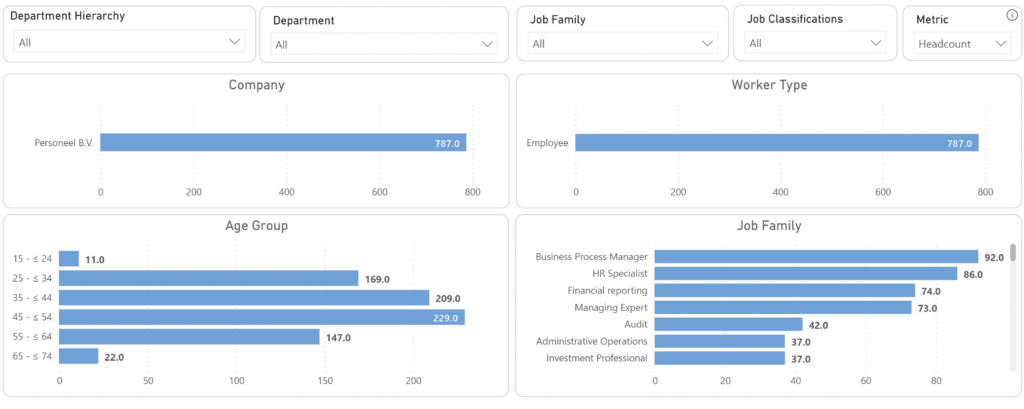The use of data analysis and visualizations for Strategic Workforce Planning (SWP)
With a strategic plan, you prepare the organization for the future. This also applies to Strategic Workforce Planning (SWP). This ensures that the right people are in the right place at the right time to achieve organizational goals.
A major insurer wanted to anticipate the aging of its current workforce in combination with the current tight labor market through strategic workforce planning. They received assistance from Highberg.

Well-prepared for the future
To proactively address the challenges in the workforce for the coming months and years, the insurer aims to plan ahead more effectively. Therefore, they are initiating strategic workforce planning. This process is being implemented by HR business partners in collaboration with senior line management.
What is Strategic Workforce Planning (SWP)?
Strategic Workforce Planning (SWP) is the process in which an organization analyzes and plans its current and future workforce needs, taking into account the strategic objectives of the organization. The planning horizon extends to 18 months or longer, a significant difference from the shorter time horizon of operational and tactical HR workforce planning. SWP explicitly focuses on identifying trends and scenarios that may impact future staffing needs, such as laws and regulations, aging, digitization, and the introduction of new products.
They use accurate HR data to predict the future workforce accurately and thus make gaps in the workforce transparent. They do this by first collecting and analyzing data on the current and future workforce. Subsequently, they evaluate the effects of changes in the business environment, enabling them to develop the right strategies to address workforce challenges.
From plan to action: How Highberg assisted
With the right insights, you make the right decisions. For that insight, Highberg has designed dashboards and visualizations with key HR data.
Insight into the current workforce
The first dashboard, 'Actuals,' displays the current workforce. This provides the organization with insight into the composition of the current workforce. For example, it includes the number of FTE, headcount, age, length of service, and breakdown by function. By combining this data, you gain insight into the workforce of a specific department, for instance.



Scenario simulator for making predictions
With strategic workforce planning, you focus on the future. Using the simulator, you can see the effects in the future based on past data. For example, the in- and outflows over the last few years are used to calculate the expected in- and outflows.
But not only that. Predictions are also made based on historical and current data regarding how many vacancies will become available. By combining this with the current workforce and the predictions, you gain insight into the 'gap' that arises. This allows you to formulate policies now and in the future to ensure you have enough and the right people to fill all vacancies.
Heatmap to represent challenges
Certain roles within an organization are easier to fill than others. Moreover, some roles are critical, meaning they are essential for achieving the organization's goals. Therefore, we present in a heatmap, per function family, the critical roles with high voluntary and involuntary turnover. This allows the organization to implement strategic workforce planning in this area as well.

Heatmap (in)voluntary turnover. Blue: deviation from the average (standard deviation 1), for example, lower than the average turnover in FTE. Orange: Upward deviation, for example, higher than the average turnover.
The right policy ensures the right workforce
In the current labor market, many companies struggle to find the right and sufficient workforce. As a company, you can only focus on a few points. The insights from the dashboards help determine focus together with the SPP process.
In this way, the organization assesses which and how many people are needed in one year, in two years, and further into the future. This insight is also combined with other data, such as certain projects on the agenda and the organization's objectives. This allows you to know where to staff up, but also where to scale down. You can anticipate this by, for example, internally reassigning people, retraining them, or hiring new colleagues.
With strategic workforce planning, you have the tools to take the right policy steps toward an organization that is ready for the future.
Related insights

